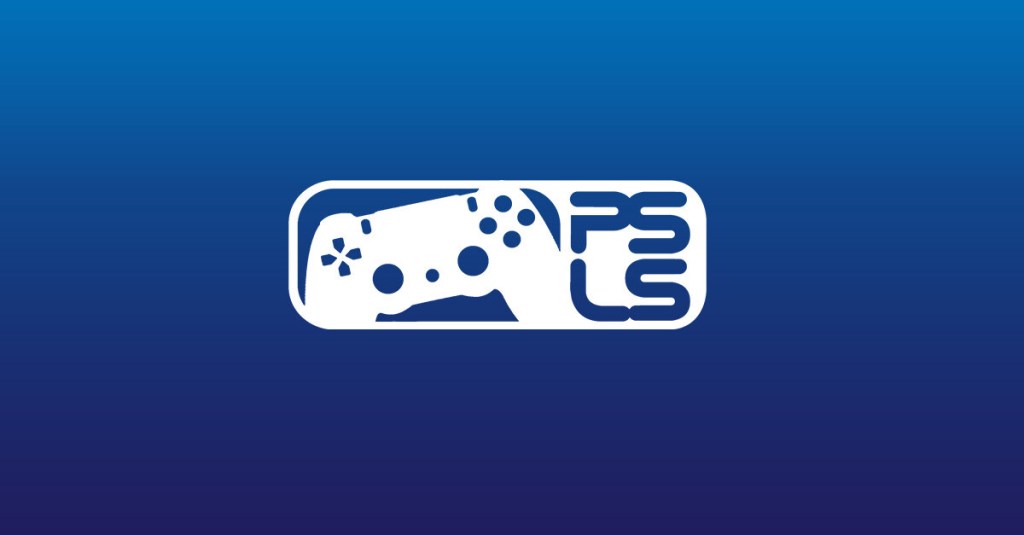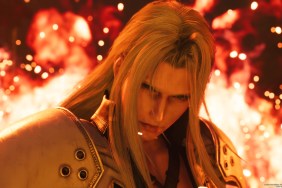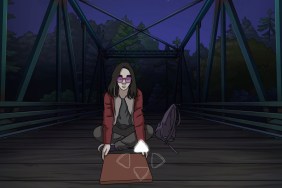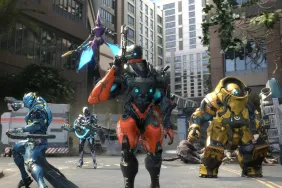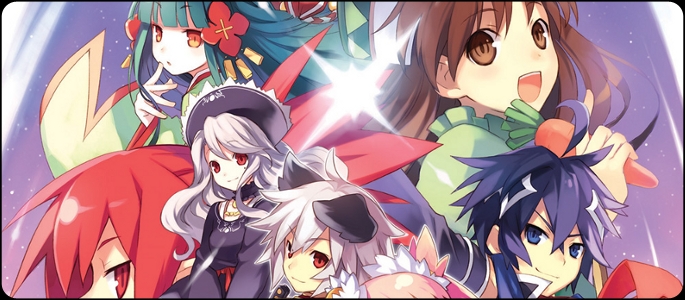
Cross-over games were once few and far between with characters rarely making a cameo in a different game series. This is starting to change however when publisher NIS America gets together with groups like Gust and Idea Factory. While their last effort, Cross Edge didn’t do too much to sway audiences toward this type of cross-over game. However the companies are back at it, this time with Trinity Universe, a game that combines characters from the popular Disgaea and Atelier series. Does this combination of characters end up smelling like roses or is it back to the drawing board for developers Gust and Idea Factory.
Trinity Universe puts players right into the realm of the netheruniverse, a space in time where objects and people drift in and out of. Gamers are given the choice to play as either the Demon Dog King Kanata or the Valkyrie Rizelea. If you choose to play through as Kanata, which makes leveling up easier, you will join up with fellow NIS characters from the Disgaea realm and make your way through the game. The Demon Dog King is on a mission to delay becoming a gem and to find adventure around every corner. Becoming a gem is something every Demon King must do to keep peace in the netheruniverse, however Kanata has different plans. Playing as Rizelea is a bit more of a challenge as you join up with fellow Atelier characters on her mission to keep peace and order in the universe with the help of the dark hero Lucius. Each story gives you a much different take on the story and the events, along with multiple endings depending on the character you select and the events you take part in. Another noticeable difference in the two stories is that Kanata has the ability to create monsters and gain clear souls while Rizelea has the ability to enter the Meteorite Workshop to create meteorites from mana.
The game is the first for many of the characters such as Etna and the prinnies to feature 3D gameplay alongside beautiful 2D characters and backgrounds. The graphics are solid but they won’t win over anyone looking for as stunning as say, Final Fantasy. The story is told through character portraits that appear on screen, which should be familiar to a fan of either of these two series. These portraits are a step up graphically, but can be taxing on the eyes as the entire character seems to sway back and forth on the screen. Other parts of the story are told through wallpaper backgrounds where voices come across in the background and you are left to stare at a usually humorous screen. Fans of both Disgaea and Atelier should find themselves right at home with this style but it might not win over newcomers to these series. Lets just be blunt right now, this game was made for its fans and it can turn off those who have yet to experience past titles. That’s not to say those who have yet to enjoy the aforementioned titles cannot have fun with this game but they might feel a bit behind.
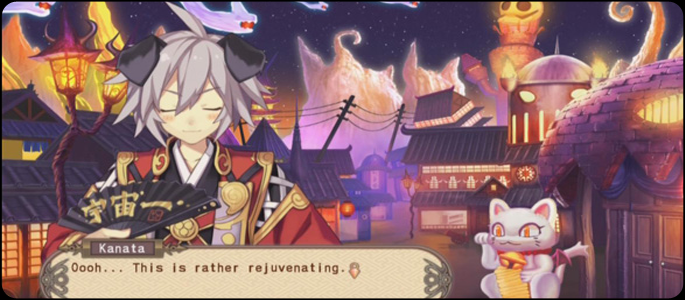
Dungeon Crawling is the main name of this game when it comes to gameplay and everything else kind of branches off of this. As objects float into the netheruniverse you will find new events and dungeons available to you. Exploring these are as easy as simply clicking through a menu so don’t expect any exploration to actually find the dungeon. The main cog here is that these objects that have floated in will only stay in orbit around the netheruniverse for a certain amount of time until they float away. This makes it very important to explore every dungeon as you have the chance so you can discover new materials and treasures.
There is an ability to anchor an object in your orbit so you can take your time exploring it so you can take advantage of that as you see fit. While each dungeon looks very different artistically, you won’t find hardly any difference in the layout of each of them. This can make things feel very tedious and leave players with the feeling that they are grinding for levels and not exploring new unknown objects. You will find secret treasures inside each dungeon with the search function (which has a limited amount of uses per entry) and these treasures will randomly change to different locations your 2nd time through a dungeon, bringing at least some change to each grind. In the end though your goal in each of these objects is the same, defeat the main enemy, thus destroying the core and stopping the object from smashing into your world.
Now while you are grinding through these levels you will of course run across enemies to fight, so it’s a good thing that the combat here is very enjoyable if not a bit confusing at first. Your party consists of up to 4 members per battle and most fights are found through random encounters. Characters in your party have 3 attacks that are assigned to triangle, square and X, which pretty much boils down to weak attack, hard attack and magic. All of the combatants have a set amount of AP at the start of each turn and once this is empty, you are moved onto the next characters turn. Players can join together characters attacks for Fury Chains or use the Image gauge to perform super attacks, heals or defense. All this can be very confusing on the player (especially the Image gauge) and takes a few chapters to really get a grasp on. Once you do master this though the combat is a lot of fun and pretty deep, though you won’t find yourself doing much more than button mashing early on until you gain more AP.
You may also use abilities such as cure and escape that you have assigned to each character during battle, but watch out as these abilities also use AP points and are very clunky to use as you must hold circle to fill up a bar. Problem here is that if you have an ability set in the third slot out of four, you must hold down the button until you have passed the first 2 abilities, making it all seem more difficult than it has to be. The combat options can be a lot to take in for even the most seasoned RPG vet but once you do, it’s on ’till the break of dawn dood! Players will also find that every attack is very colorful and well animated, bringing the humor from the game into the combat and making for a very fun experience.
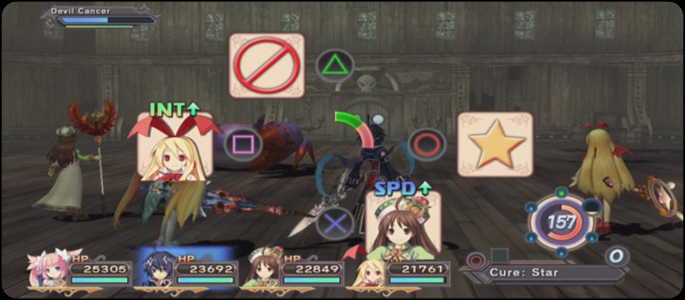
Once done with the long grind of the dungeon, you will want to head back to Empyria to get started synthesizing items and creating monsters. Manuals to learn how to make items can be purchased at the shops and items found through your battles are used as the materials. Creating new items is key in obtaining new weapons, armor and such throughout the game but as with other aspects of the game feels clunky and not well thought out. These is no ability inside the menu to compare current weapons and armor to items you can make or buy in the store, meaning you must have a pretty damn good knowledge of your current equipments stats or spend a lot of time writing notes on a sheet of paper. This makes for some very annoying times inside the shop as upgrading your party becomes a hassle that it really shouldn’t be.
This same issue shows up yet again with the monster coliseum. Here you can use manuals and materials to create monsters which you can then in turn battle for better items. The big problem here is that there is no way to know just how powerful the monster is that you are creating, leading to plenty of quick deaths. Luckily though it is not game over when you lose as you will be taken outside the coliseum but it would have been nice to see the development team go that extra bit to help players. If you choose to play as Rizelea, you will find the meteorite workshop, which will allow players to equip meteorites on planetary rings to raise your characters parameters. Outside of item synthesizing and monster creations, players will find themselves busy searching for new managraphics to add to their weapons. These are special symbols you can place on your weapon to add enhancements to not only your weapons powers but also its looks too.
You may place two of these on a weapon and can swap between the two during battle, giving players a bit of strategy during battle and with what they put on their weapon. It can be a lot of fun mixing symbols on your weapon to give it that much needed flavor that it was missing. These is also a ranking system attached to the dungeon crawling in the game that will display your rank against those all around the world to see just who the best explorer is. This adds a bit of extra depth to the game for those of you out there who are always trying to be numero uno.
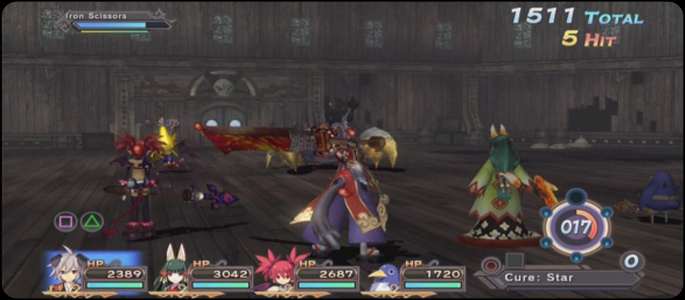
The music found in the game is actually very enjoyable the first few hours of the game but fades very quickly as the same song is used over and over again. However you will be praying for more of this song as many of the characters begin to speak as the voice acting is borderline horrific. Not to say every character is badly done but spend 1 minute listening to the Ghostly Pamela speak and you will be begging for someone to make it stop. The script never takes itself too seriously and the usual humor to be found in any NIS game is there at every corner, even if it does get a bit repetitive at times.
Overall Trinity Universe is one of those games that you will enjoy playing but will leave you wanting just a bit more from the developer. Great humor, top notch 2D work and fun combat are met by clunky menus, extremely awkward voice acting, and overly repetitive dungeons. If you are not a fan of grinding for items and materials through repetitive dungeons and a bare bones story, this is a game you might want to take a pass on. However if you are in the mood to grind away hour upon hour to better your character; all while laughing at insane conversations between hair obsessed characters and kings with an eye for food and adventure, you have met your match. Just make sure not to throw the prinnies as they do tend explode on contact Dood!
PlayStation LifeStyle’s Final Score
Deceptively Deep Gameplay Voice Acting & Repetitive Dungeons Spoil Experience |
 |
–
